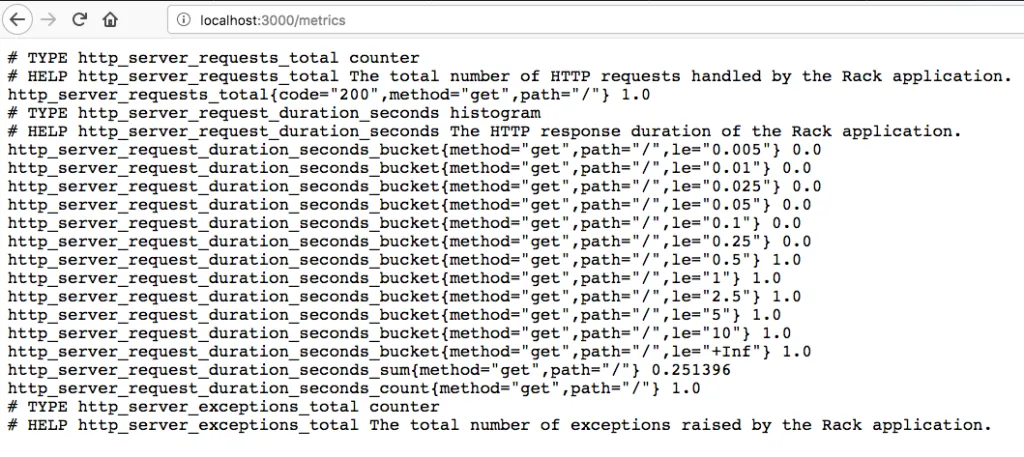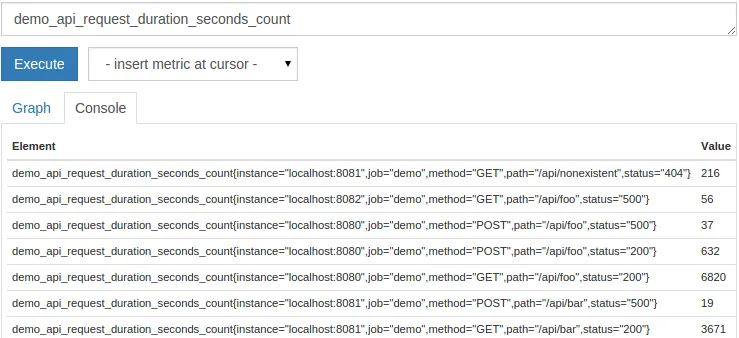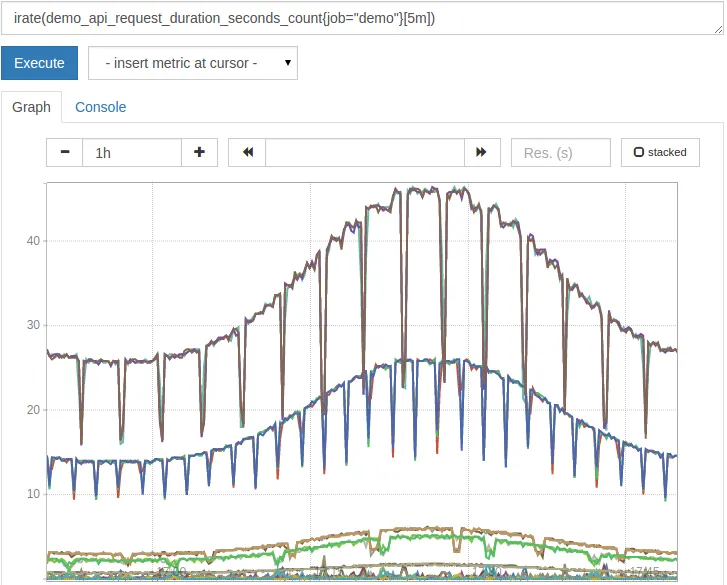We will entangle buds and flowers and beams
Which twinkle on the fountain's brim, and make
Strange combinations out of common things
"Prometheus Unbound" by Percy Bysshe Shelley
Welcome to the world of metrics collection and performance monitoring. As with most things IT, entire market sectors have been built to sell these tools. And, of course, several open source utilities serve the same purpose. It's one of these open source tools that we're going to examine.
What is Prometheus?
Prometheus is a metrics collection and alerting tool developed and released to open source by SoundCloud. Prometheus is similar in design to Google's Borgmon monitoring system, and a relatively modest system can handle collecting hundreds of thousands of metrics every second. Properly tuned and deployed, a Prometheus cluster can collect millions of metrics every second.
Prometheus is made up of roughly four parts:
- The main Prometheus app itself that is responsible for scraping metrics, storing them in the database, and (optionally) retrieving them when queried.
- The database backend is an internal Time Series database. This database is always used, but data can also be sent to remote storage backends.
- Exporters are optional external programs that ingest data from a variety of sources and convert it to metrics that Prometheus can scrape.
- Exporters are purpose-built for working with specific applications and hardware.
- AlertManager is an alert management system that ships with Prometheus.
- Client Libraries can be used to instrument custom applications.
I say "roughly" four parts because plenty of additional applications are often used with a standard Prometheus cluster. If you need or want better graphing capabilities, applications like Grafana can be deployed. If you need to store metrics for long periods of time, remote storage backends are worth considering. And the list goes on. For this article, however, we're going to focus on Prometheus itself with a small detour into exporters.
[ You might also like: 6 sysadmin skills web developers need ]
What is a metric?
Before we get there, we need to understand why something like Prometheus exists. So let's start with a question: What are metrics? Simply put, metrics measure something. For instance, the time it takes you to read this article is a metric. The number of words is a metric. The average number of letters in the words of this article is a metric.
However, those metrics are fairly static and not something you'd necessarily need a system like Prometheus for. Prometheus excels at metrics that change over time. For instance, what if you wanted to know how many "views" this article is getting? Or what if you wanted to know how much traffic is entering and leaving your network? Or how many build and deploy cycles are happening each hour? All of these are metrics that can be fed into Prometheus.
Now that we understand what a metric is, let's look at how Prometheus gets the metrics it needs to store. The first thing Prometheus needs is a target. Targets are the endpoints that supply the metrics that Prometheus stores. These endpoints can be the actual endpoint being monitored, or they can be a piece of middleware known as an exporter. Endpoints can be supplied via a static configuration or they can be "found" through a process called service discovery. Service discovery is a more advanced topic for a future article.
Once Prometheus has a list of endpoints, it can begin to retrieve metrics from them. Prometheus retrieves metrics in a very straightforward manner; a simple HTTP request. The configuration points to a specific location on the endpoint that supplies a stream of text identifying the metric and its current value. Prometheus reads this stream of text, ignores lines beginning with a # as comments, and stores the metrics it receives in a local database.

Figure 1 - Example metrics output (from itNext)
A short sidetrack into Exporters
Prometheus can only use HTTP to talk to endpoints for metrics collection. What happens when you're trying to monitor a router or switch that only communicates using SNMP? Or perhaps you want to monitor a cloud service that doesn't have a native Prometheus metrics endpoint? Fortunately, there's a solution: Exporters.
Exporters come in many shapes and sizes. These are small, purpose-built programs designed to stand between Prometheus and anything you want to monitor that doesn't natively support Prometheus. Some exporters sit idle until Prometheus polls them for data. When this happens, the exporter reaches out to the device it is monitoring, gets the relevant data, and converts it to a format that Prometheus can ingest. Other exporters poll devices automatically, caching the results locally for Prometheus to pick up later.
Regardless of design, exporters act as translators between Prometheus and endpoints you want to monitor. Chances are if you're trying to monitor a common device or application, there's an exporter out there for it.
Data storage
Prometheus uses a special type of database on the back end known as a time series database. Simply put, this database is optimized to store and retrieve data organized as values over a period of time. Metrics are an excellent example of the type of data you'd store in such a database.
External storage is also an option. There are many choices, such as Thanos, Cortex, and VictoriaMetrics that provide a variety of benefits. One of the primary benefits is the centralization of the gathered metrics and long term storage. Tools such as Grafana can query these third party storage solutions directly.
So you have a bunch of metrics...
Now that you're an expert on Prometheus and you have it storing metrics, how do you use this data? Much like a SQL database, Prometheus has a custom query language known as PromQL. PromQL is pretty straightforward for simple metrics but has a lot of complexity when needed. Supplying the name of a metric will show all "instances" of that metric:

You can also use some PromQL methods to generate a graph representing the data you're after.

Of course, if you're serious about graphing, it's worth looking into a package such as Grafana. Grafana allows you to create metrics dashboards, send alerts, and more.
Alerting
While graphs are pretty to look at, metrics can serve another important purpose. They can be used to send alerts. Prometheus includes a separate application, called AlertManager, that serves this purpose. AlertManager receives notifications from Prometheus and handles all of the necessary logic to dedupe and deliver the alerts.
Alerts are created by writing alert rules. These rules are simply PromQL queries that fire when the query is true. That is, if you have a query that checks whether the temperature on the CPU is over 80C, then the query fires for each metric that meets that condition.
Alert rules can also include a time period over which a rule must evaluate to true. Expanding on our temperature example, exceeding 80C is okay if it's a brief period of time, but if it lasts more than five minutes, send an alert. Alerts can be sent via email, Slack, Twitter, SMS, and pretty much anything else you can write an interface for.

[ Looking for more on system automation? Get started with The Automated Enterprise, a free book from Red Hat. ]
Wrap up
Monitoring is important. It helps identify when things have gone wrong, and it can show when things are going right. Proper monitoring can be used across various disciplines to squeeze everything you can out of the object being monitored.
Prometheus is a powerful open source metrics package. It is highly scalable, robust, and extremely fast. A single modern server can be used to monitor a million metrics or more per second. Distributing Prometheus servers allows for many tens and even hundreds of millions of metrics to be monitored every second.
PromQL provides a robust querying language that can be used for graphing as well as alerting. The built-in graphing system is great for quick visualizations, but longer-term dashboarding should be handled in external applications such as Grafana.
À propos de l'auteur
Jason is a 25+ year veteran of Network and Systems Engineering. He spent the first 20 years of his career slaying the fabled lag beast and ensuring the passage of the all important bits. For the past 5 years he has transitioned into the DevOps world, doing the same thing he used to, but now with a shiny new title! Jason is also a co-host for the Iron Sysadmin podcast. He can be found on the Twitters under the handle of @XenoPhage.
Contenu similaire
Parcourir par canal
Automatisation
Les dernières nouveautés en matière d'automatisation informatique pour les technologies, les équipes et les environnements
Intelligence artificielle
Actualité sur les plateformes qui permettent aux clients d'exécuter des charges de travail d'IA sur tout type d'environnement
Cloud hybride ouvert
Découvrez comment créer un avenir flexible grâce au cloud hybride
Sécurité
Les dernières actualités sur la façon dont nous réduisons les risques dans tous les environnements et technologies
Edge computing
Actualité sur les plateformes qui simplifient les opérations en périphérie
Infrastructure
Les dernières nouveautés sur la plateforme Linux d'entreprise leader au monde
Applications
À l’intérieur de nos solutions aux défis d’application les plus difficiles
Programmes originaux
Histoires passionnantes de créateurs et de leaders de technologies d'entreprise
Produits
- Red Hat Enterprise Linux
- Red Hat OpenShift
- Red Hat Ansible Automation Platform
- Services cloud
- Voir tous les produits
Outils
- Formation et certification
- Mon compte
- Assistance client
- Ressources développeurs
- Rechercher un partenaire
- Red Hat Ecosystem Catalog
- Calculateur de valeur Red Hat
- Documentation
Essayer, acheter et vendre
Communication
- Contacter le service commercial
- Contactez notre service clientèle
- Contacter le service de formation
- Réseaux sociaux
À propos de Red Hat
Premier éditeur mondial de solutions Open Source pour les entreprises, nous fournissons des technologies Linux, cloud, de conteneurs et Kubernetes. Nous proposons des solutions stables qui aident les entreprises à jongler avec les divers environnements et plateformes, du cœur du datacenter à la périphérie du réseau.
Sélectionner une langue
Red Hat legal and privacy links
- À propos de Red Hat
- Carrières
- Événements
- Bureaux
- Contacter Red Hat
- Lire le blog Red Hat
- Diversité, équité et inclusion
- Cool Stuff Store
- Red Hat Summit

